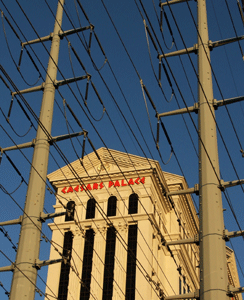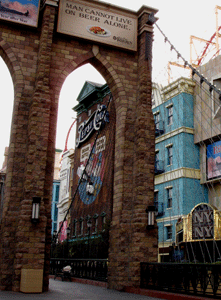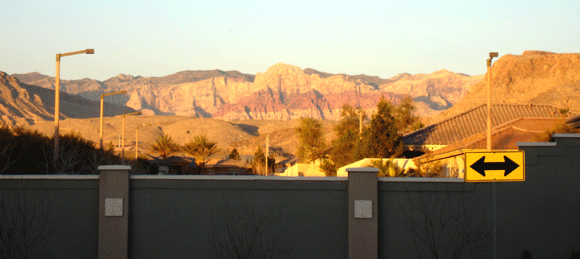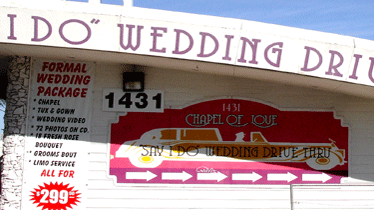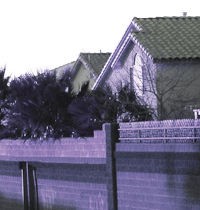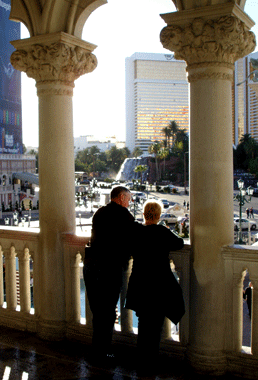
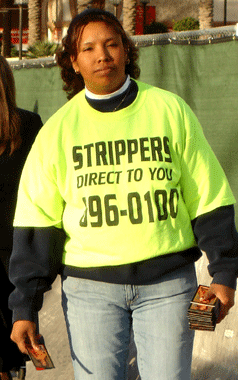
Tales of a 21st Century Gypsy
January 18, 2006. Las Vegas
While in Lake Havasu City I dug out a map, and realized that I was pretty close to Las Vegas. So I decided Iíd better see the place. I was sure Iíd hate it. Iím not interested in gambling, and I certainly found the casinos in Las Vegas pretty distasteful when I drove through in December. But I wanted to see the show.
Iíd planned to stay in the casino parking lots, where someone at Lake Havasu had assured me it was easy to spend the night. So when I got into the city, I headed into one of the big ones towards the north end of the strip, parked Matilda, and went out to explore.
Iím glad I went. Casinos donít do a thing for me Ė dark, smoky places with flashing lights and blinking machines, people aimlessly wasting their money, the whole place set up so you canít see the daylight or have any idea how long youíve been there. But the scene was fascinating. The strip Ė Las Vegas Boulevard Ė is one huge hotel after another, each one grander and more outrageous than the next. The boulevard is so wide and so crowded that they have built pedestrian overpasses to get across, and youíd take your life in your hands if you didnít use them. The streets were packed with people. Tourists and conference-goers, most of them, plus a few
